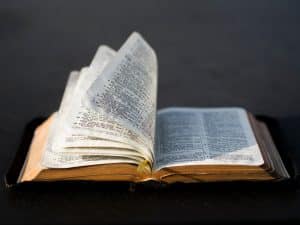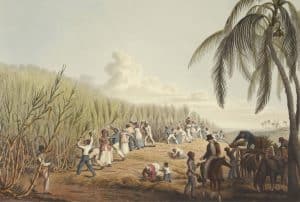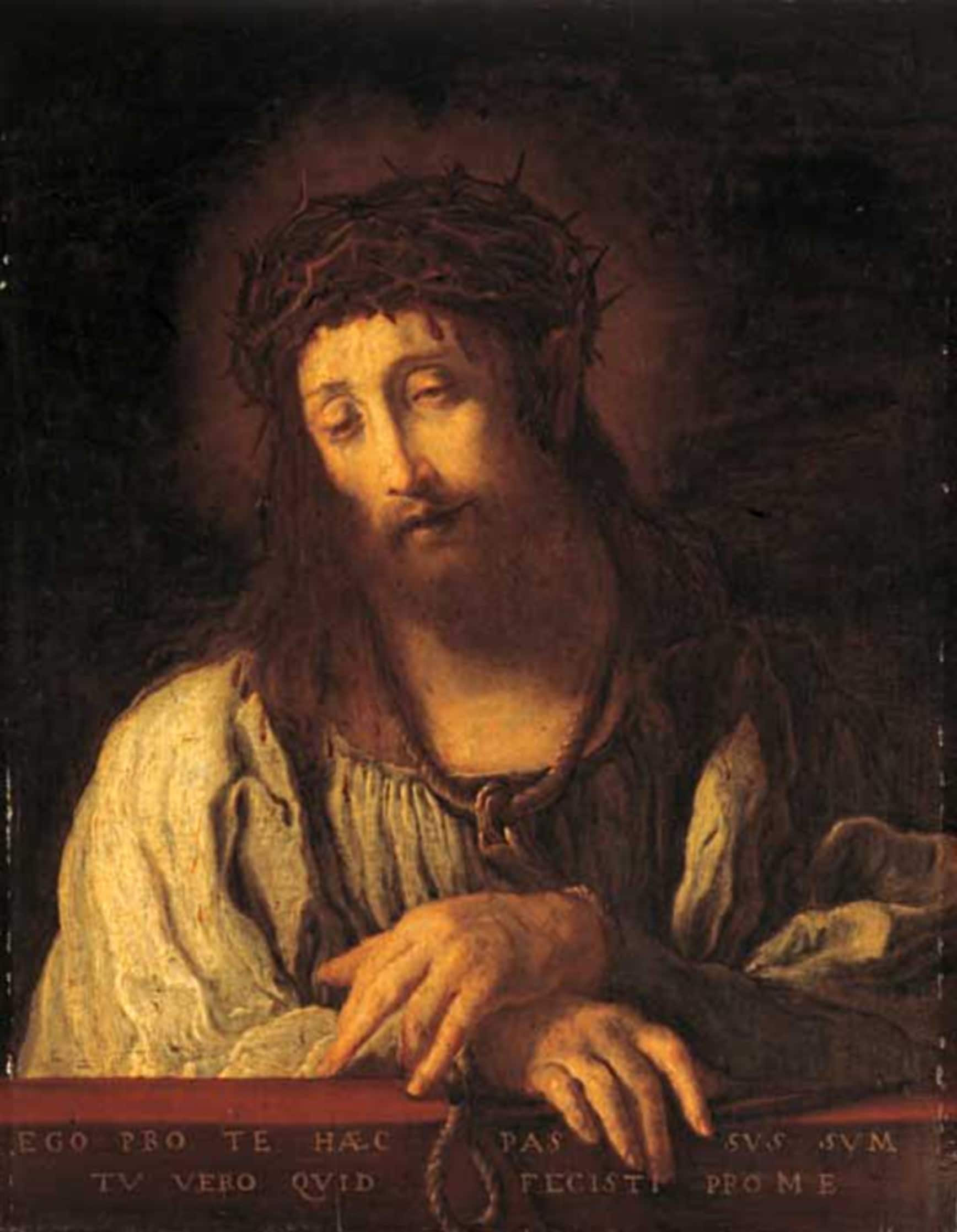The story of Zinzendorf and the Moravians goes like this. The rich, young Nicholas Ludwig von Zinzendorf stood transfixed before a painting of Yeshua being presented to the people by Pilate, whipped and crowned with thorns. The painting was entitled “Ecce Homo” (Behold the Man), and written below were the words, “This have I suffered for you; now what will you do for me?”
Count Zinzendorf would be forever changed from that moment. His response was to offer his life and all that he owned in return, and so God (never one to turn down an offer like that!) used him to launch one of the most influential movements in history. Zinzendorf and the Moravians not only restarted the defunct engine of world mission and initiated their famous 100 years of continuous prayer, but they also were world pioneers for the Messianic movement way back in the early eighteenth century. Here’s what happened.
The situation was ripe for a makeover
For centuries, Yeshua’s mandate to take the gospel to the nations had been all but abandoned, along with an understanding about what the gospel even really was, since most ordinary people had no access to the word in their own language. The advent of Bible translation and the invention of the printing press brought  about a Bible reading revolution, and by the sixteenth century, believers could finally read for themselves what it really meant to follow Yeshua, and also about God’s plans for Israel.
about a Bible reading revolution, and by the sixteenth century, believers could finally read for themselves what it really meant to follow Yeshua, and also about God’s plans for Israel.
Before those events, a man called John Huss had been calling people back to Biblical truth in what is now the Czech Republic. He was eventually burned at the stake, but his followers continued with his call for a departure from man-made religion, back to the simple truths of the Bible, and like him, they were hounded and persecuted. Many years later, a large group of these faithful Moravian Hussites fled up to Germany, seeking refuge. It is at this point in the story that our friend, Count Zinzendorf, appears.
Zinzendorf and the Moravians
The Moravian believers needed a place to settle, and Count Zinzendorf was a wealthy nobleman with a heart for Jesus and plenty of land to share. Land he had already dedicated to God long ago. It was on this very estate that a movement began with Zinzendorf and the Moravians that would be truly ground-breaking—both in church history and also in the story of Messianic Judaism.
The first tree was felled to start building accommodation for the Moravian refugees on 17th June 1722. When Zinzendorf came to see how the building was coming along, “He joyfully entered it, welcomed them cordially, fell upon his knees with them, returned thanks to God, and blessed the place with a warm heart.”1 At the dedication of the house, they read Isaiah 62 together:
“On your walls, O Jerusalem, I have set watchmen; all the day and all the night they shall never be silent. You who put the Lord in remembrance, take no rest, and give him no rest until he establishes Jerusalem and makes it a praise in the earth”. (Isaiah 62:6-7)
“Count Zinzendorf was undoubtedly one of the most extraordinary personages”, wrote his friend and biographer, “He was a lover of Jesus, and a friend of man… a man of original genius… a sound, though occasionally eccentric theologian” who “could not be prevailed upon to do anything contrary to his conscience”.2 He would often give two or even three sermons a day to anyone who would listen – sometimes just his extended family, other times many others. He wrote hymns and poetry, and would travel often, and inspire others to do so, preaching the gospel wherever he went.
The movement that started with Zindendorf and the Moravians on the Count’s estate became quite remarkable for a number of reasons. After multiple conflicts in the community, a contract of peace was created, with every household agreeing to the covenant of how to treat one another. A system of prayer was instituted, praying literally around the clock in shifts, 24 hours a day, 7 days a week. They kept this up for one hundred years. ONE HUNDRED YEARS of continuous prayer!
The effect of 100 years of prayer
Perhaps unsurprising then, that many other fireworks erupted from within this bunch of dedicated believers. In what was otherwise a lull in proclamation of the gospel among the nations, the Moravians sent over one hundred missionaries all over the world. Possibly the most remarkable story being that Zinzendorf had met an African man who had escaped captivity in the Americas, and after hearing his harrowing story, brought him back to tell the Moravian community.
The Moravians were so moved by what they heard that some of them even sold themselves into slavery, so that they could share the good news with those immiserated in bondage as they worked alongside them. Unlike the Africans who had been kidnapped and stolen, these crazy Moravians volunteered themselves willingly to be shipped over the ocean as slaves, simply to take the gospel of freedom to those trapped in the hell of slavery.
 That level of loving sacrifice is hard for us to even imagine.
That level of loving sacrifice is hard for us to even imagine.
There is another wonderful story of a group of Moravian families on a boat to America who had set out bearing the Good News, when suddenly they hit terrible weather and were all in mortal danger. To the amazement of the rest of the ship’s passengers, the Moravians—men, women and children—sang songs of praise to God with no trace of fear. This so impacted one of the passengers (who already believed himself to be a Christian) that he underwent a powerful spiritual transformation and arrived in America like a new man. His name was John Wesley. God later used Wesley to spark an evangelical revival in the UK and to raise up hundreds of evangelists who would travel round preaching the gospel.3
A Forerunner for the Messianic Movement
According to Christiane Dithmar’s work on the subject 4, Zinzendorf became convinced from the Scriptures that reaching the Jews first was a necessity of world mission according to Romans 1:16, and so sent people to the Jewish community in Amsterdam straight away.
Zinzendorf added prayers for Israel to the community’s litany in 1740 – the first time intercession for Israel had ever been made a regular part of liturgy in the whole of the Western church. The petition asked that God would “restore the tribe of Judah in its time and bless its first fruits among us.”
He also introduced the keeping of Yom Kippur as a way of remembering the Jewish roots of the faith, and even tried to keep kosher to make it easier for Jewish people to live with them in their Moravian settlement. He criticized the Western church for adopting the name “Oester” (Easter) instead of holding to the original “Pasch,” which is closer to the original festival of Pesach (Passover) during which Yeshua was crucified and rose again. Lamb was the preferred Easter dinner for many Moravian families throughout the 19th century, in reference to the Passover lamb that was slain.
Over the years, Zinzendorf and the Moravians made several attempts to establish a Jewish “Kehila” (congregation or community). Zinzendorf arranged for the marriage of Jewish-Christian couples according to Jewish rites, but there was never a large enough group to establish a separate community. Not many Jewish people were coming to faith in Yeshua at that time in history, but I personally know of at least one Jewish family who joined the Moravians, and whose descendants later became missionaries to Tibet, and there were certainly others. However, numerous Gentiles were touched by this amazing movement and the gospel they were offering, and by key influencers like John Wesley who were so impacted by them.
A different end to the story of the rich young ruler

The story of Zinzendorf and the Moravians shows what can happen when the rich young ruler doesn’t walk away from Yeshua with sadness, but joyfully embraces the challenge to surrender everything he has and serve the needy. Yeshua chose just twelve ordinary men to turn the world upside-down; men who became unafraid of death, suffering or sacrifice. They had walked with Yeshua and seen his willingness to pour out everything for them, and were willing to dedicate everything to him in return. The man in the picture throws down the gauntlet to us all: “This have I suffered for you; now what will you do for me?”
[1] The Life of Nicholas Lewis Count Zinzendorf, tr. by S. Jackson – By bp. August Gottlieb Spangenberg (1838) pp.ix – xiv
[2] ibid, p.40
[3] Christianity Today Magazine – “The Moravians and John Wesley” posted 1/01/1982
[4] Christiane Dithmar: Zinzendorfs nonkonformistische Haltung zum Judentum (Univ. of Heidelberg, 2000)
















